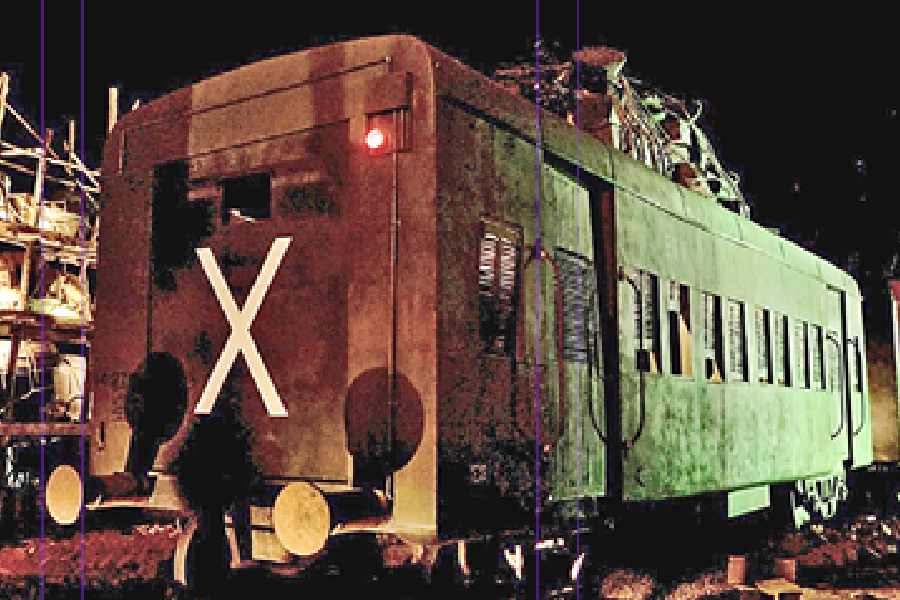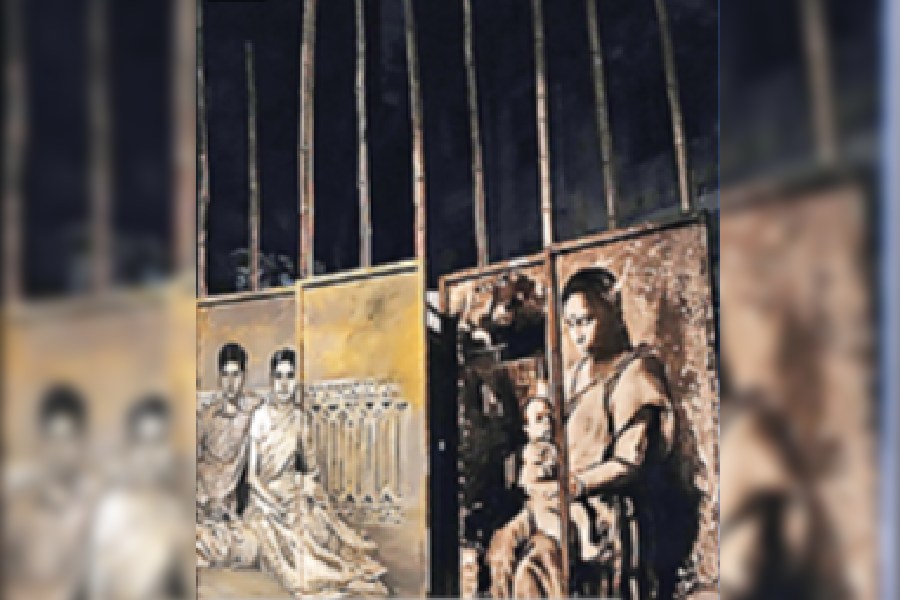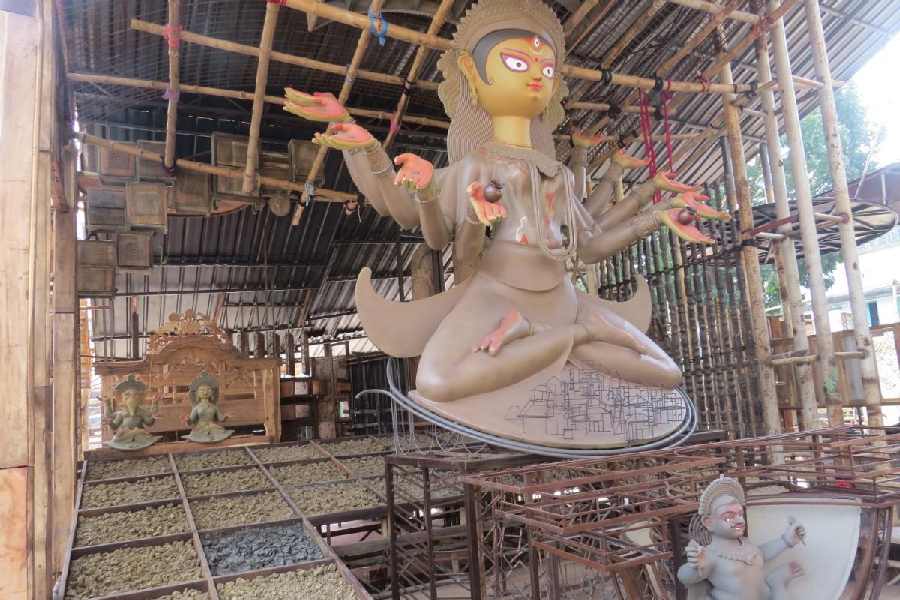A puja in a refugee colony is looking back to the area’s genesis through its themes over three years.
In 2021, the theme was displacement from east Bengal. Last year’s theme was settling down on Calcutta’s fringe and this year, it’s lookback.
Decades ago, a stretch of paddy fields and bogs, now known as Naktala, had, like its vicinity, become peopled by uprooted families who crossed the border carrying nothing but their barest essentials and scarred memories.
Their arrival as refugees, how they grafted themselves in the colony and subsequent nostalgia are what theme-maker Pradip Das has showcased at Naktala Udayan Sangha over three years now.

The 2021 pandal that showed refugees coming by train
“The postal index number of the area is 47, which is a momentous year in its history. That made me think of focusing on the colony’s collective memory,” said Das.
His research team has recorded interviews of old-timers, bits of which have made it to the soundtrack playing on the speakers, while some quotes are etched on the pandal. One voice, of 96-year-old Nihar Banerjee, fell silent forever within weeks of the recording.
Their belongings, too, have been photographed — frayed corners of hinges in albums, vermillion box, refugee certificates, old coin.... These have been used as decor in the third instalment of the series, the theme of which is “Hridaypur” (heartland).
There are pictures of residents and their deceased forefathers, some of them visible through an iron grille, the contours of which depict the colony’s map.

Water of various Bangladesh rivers in glass beakers at the Naktala pandal
Several almirahs stand at a side, many with their doors ajar, indicating use in day-to-day life. Glass beakers containing water are captioned with the names of rivers in Bangladesh — Sitalakshya, Bishkhali, Kalijira....
“Our artist travelled to Bangladesh and collected the water from the rivers,” said Sandip Dasgupta, a club member.
“The clay you see at the idol’s feet was collected from various parts of our para.”
There is a spring in the steps of club members showing visitors around, more so of those who or whose families have made it to the pandal walls. A group of visitors, including five Italians, which visited the pandal on Sunday night were being shown around by Das when he stopped in front of Narayan Bhattacharya and told them: “See that painting of a photograph of a mother and a baby. He is the baby.”
Bhattacharya, now 60, told Metro that such moments make him spend hours at the pandal. “Who knew my mother and I would find such pride of place in our pandal!” he said, beaming.

Pictures from albums of residents at the pandal. The baby in the woman's lap is now aged 60
Among older neighbours who have contributed memories is Ranjit Bhattacharya, aged 82.
“We had left Dhaka, Bikrampur, in the dead of night with nothing. This area was a wasteland when we arrived here, as was much of the expanse where 42 colonies came up south of the Dhakuria bridge. I took part in the agitation to get title deeds to the land and was a member of the colony committee. They recorded my memories for an hour. I am looking forward to being given a tour of the pandal,” he said.
Theme-maker Das’s trip to Bangladesh yielded an occasion of serendipity. “I photographed several houses there. When a family was describing their family seat in Bangladesh, I showed
them the photographs I clicked and the old lady recognised one to be theirs,” Das said.
Das said he wanted to connect the puja to the locality in more ways than one. “That is why instead of covering the adjacent houses, which is the usual practice, I have left gaps though which they can be seen,” he said.
An almirah opens out to a staircase leading towards the actual houses, suggesting the connection.
